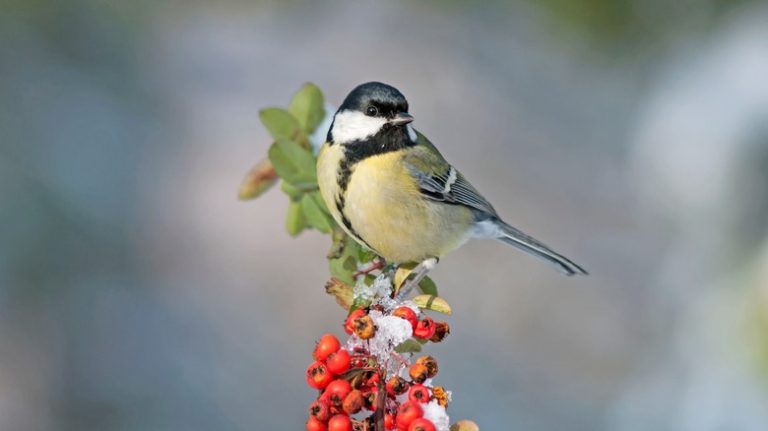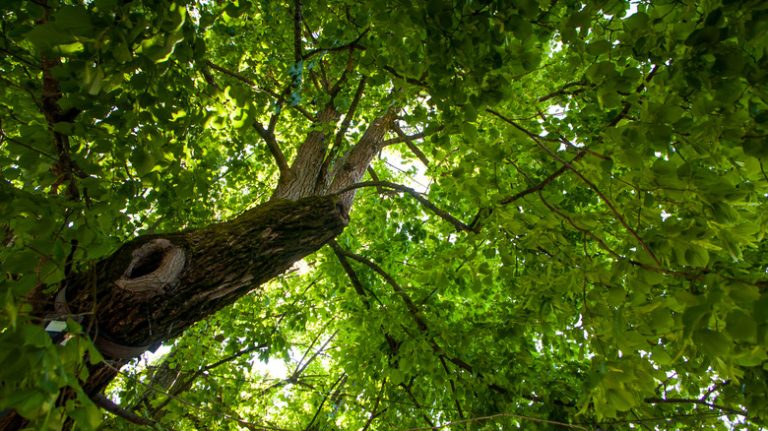The Chinkapin Oak, scientifically known as Quercus muehlenbergii, is an interesting species of oak tree that is native to the United States. It is named after Gotthilf Heinrich Ernst Muhlenberg, a Lutheran pastor and botanist who extensively studied plants in the 18th century. The Chinkapin Oak is commonly found in the central and eastern parts of the United States.
The Chinkapin Oak is a medium-sized tree that can reach a height of up to 70 feet and a trunk diameter of up to 3 feet. Its crown is rounded and dense, providing ample shade in the hot summer months. The bark on the twigs of this oak is flaky and becomes scaly as the tree matures. This beautiful oak tree is highly valued for its attractive appearance and its ability to grow in various habitats.
Foresters and horticulturists have recognized the many benefits of the Chinkapin Oak, making it a popular tree to be planted in parks, gardens, and landscapes. It is resistant to many diseases and insect attacks, making it a low-maintenance tree. The Chinkapin Oak also provides a habitat for various wildlife species and its acorns are an important food source for many animals.
The Chinkapin Oak is known for its adaptability to different soil types and climates. It can be found growing on a wide range of soils, including limestone and heavy clay. It is commonly found in upland forests, but can also grow in moist bottomlands. It is one of the few oak species that can tolerate the alkaline soils of the West. This adaptability makes it a versatile tree for planting in various regions of the United States.
The Chinkapin Oak produces small acorns that mature in the fall. These acorns are an important food source for squirrels, deer, and other wildlife. The acorns are sweet and less bitter than those of other oak species, making them more palatable to animals and humans alike. In addition to their nutritional value, the acorns of the Chinkapin Oak are an interesting subject for study, and many scientists and researchers have conducted experiments and made observations on their germination and stratification.
If you are looking for a low-maintenance tree that can thrive in various conditions and provide important ecological benefits, the Chinkapin Oak may be your best choice. Its adaptability, attractive crown, and interesting seedling characteristics make it a highly sought-after tree. Whether you are a homeowner, a forester, or a member of a landscaping society, the Chinkapin Oak is definitely a tree worth considering.
Kansas Forest Service
The Kansas Forest Service is a state government agency that is responsible for the management and protection of forests in Kansas. It helps private forest landowners develop and manage their forests, provides technical assistance to communities for tree planting and management, and conducts research on forest ecology and management.
One of the interesting species that the Kansas Forest Service works with is the Chinkapin Oak (Quercus muehlenbergii). The Chinkapin Oak is a medium-sized oak tree that grows up to 60 feet in length. It is native to the central and eastern United States, and is commonly found in the states of Kansas, Nebraska, and Iowa.
The Chinkapin Oak is known for its adaptable nature and ability to grow in a variety of soils. It can be found growing on limestone outcrops, on sandy or clay soils, and even on moist bottomlands. The tree is usually found in upland forests, where it often grows with other hardwoods such as hickories and beech trees.
The Chinkapin Oak produces acorns, which are an important food source for a variety of wildlife species. White-tailed deer, chipmunks, and squirrels can commonly be seen feeding on the acorns in the early summer months. The acorns can also be eaten by some birds and insects.
In addition to its food value, the Chinkapin Oak is also valuable for its wood. It has a straight grain and fine texture, and is commonly used for fuelwood, fencing, and furniture. The tree is also resistant to many diseases and insect attacks, such as the common oak wilt disease and the blister rust fungus that commonly attacks white pines.
The Kansas Forest Service works closely with foresters and landowners to promote the growth and management of Chinkapin Oaks. They provide information on tree planting, care, and protection, and can even assist with seed stratification to improve the germination and growth of new trees. The service also conducts research on the frequency and intensity of oak growth and mortality, and develops strategies to reduce the impact of pests and diseases on oak forests.
Overall, the Chinkapin Oak is an important tree species in Kansas, and its presence adds beauty and diversity to the state’s forests. The Kansas Forest Service plays a crucial role in the management and protection of this tree, ensuring that it continues to thrive and contribute to the health of the state’s forest ecosystem.
Chinkapin Oak
The Chinkapin Oak (Quercus muehlenbergii), also known as Yellow Chestnut Oak, is a species of oak tree that is commonly found in the central and eastern United States. It is a medium to large-sized tree that typically reaches heights between 60 and 80 feet, with a crown spread of about 40 to 60 feet.
The Chinkapin Oak is known for its fast growth and can reach its mature size in about 30 to 40 years. The bark of the tree is light gray and develops flaky plates as it ages. The leaves of the Chinkapin Oak are simple and alternate, with a length of about 4 to 8 inches. They are dark green on the top and lighter green underneath, with deep lobes and rounded teeth.
The Chinkapin Oak produces acorns, which are an important food source for many animals and birds. The acorns of the Chinkapin Oak are relatively large and are usually 1 inch long. They have a cap covered in dense hair and mature in about one year. The acorns are commonly eaten by white-tailed deer, squirrels, chipmunks, and birds.
Chinkapin Oak trees are commonly found in upland forests, usually in association with other hardwoods such as beech and hickory. They prefer well-drained soils, including sandy or rocky soils, and are often found on dry ridges, slopes, or outcrops. Chinkapin Oak trees can tolerate drought conditions and are adapted to the drier climate of the Great Plains region.
In addition to its role in wildlife habitat, the Chinkapin Oak has several other uses. The wood of the tree is considered a valuable white hardwood and is commonly used for furniture, flooring, and cabinetry. The acorns of the Chinkapin Oak can also be used as a food source for humans, and they can be roasted or ground into flour.
In terms of conservation, the Chinkapin Oak is considered a species of least concern by the International Union for Conservation of Nature (IUCN). However, the tree is important for forest restoration and is often planted by farmers, landowners, and foresters for soil conservation and wildlife habitat improvement.
Overall, the Chinkapin Oak is a versatile tree with many characteristics that make it valuable for both wildlife and human use. Its fast growth, adaptability to various soil types, and high-quality wood make it a popular choice for homeowners and land managers in the Midwest and Great Plains regions.
Diseases that Can Affect Chinkapin Oak
The Chinkapin Oak (Quercus muehlenbergii) is a hardwood tree that is native to the central and eastern United States. It is commonly found in upland forests, where it grows on a variety of soils including heavy clay and moist loam. Chinkapin Oaks have a wide range of adaptability and can also be found growing on limestone outcrops and mollisols.
While Chinkapin Oaks are generally healthy and resistant to many diseases, there are a few ailments that can affect them. One common disease is oak wilt, which can be deadly to the tree. Oak wilt is caused by a fungus that attacks the vascular system, ultimately killing the tree. Infections can occur through root grafts or by beetles that carry the fungus to wounded or freshly cut wood. Symptoms of oak wilt include wilting leaves, discoloration, and rapid defoliation.
Another disease that can affect Chinkapin Oaks is powdery mildew. Powdery mildew is a fungal disease that affects many types of trees, including oaks. It is characterized by a white or gray powdery growth on the leaves and twigs of the tree. Powdery mildew can reduce the overall growth and vigor of the tree, but it is rarely fatal.
Chinkapin Oaks can also be susceptible to various insects, including the oak twig girdler and the leafmining sawfly. The oak twig girdler is a beetle that lays its eggs in the twigs of the tree, causing them to break and fall off. The leafmining sawfly is a caterpillar that feeds on the leaves, creating tunnels or mines in the foliage. While these insects can be a nuisance and cause damage to the tree, they typically do not pose a major threat to the overall health of the Chinkapin Oak.
In order to maintain the health of Chinkapin Oaks, it is important to provide proper care and maintenance. This includes watering during dry periods, mulching around the base of the tree to retain moisture, and pruning as needed to remove dead or diseased branches. Additionally, practicing good sanitation by removing fallen leaves and twigs can help prevent the spread of diseases and pests.
In conclusion, while Chinkapin Oaks are generally hardy and resistant to many diseases, there are a few ailments that can affect them. Being aware of these diseases and taking preventive measures can help ensure the health and longevity of Chinkapin Oak trees.




